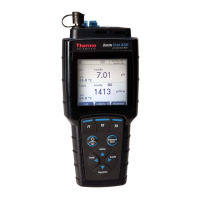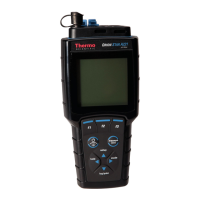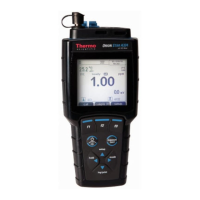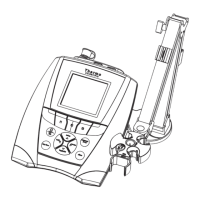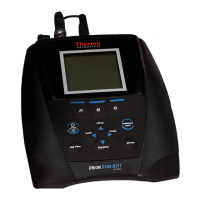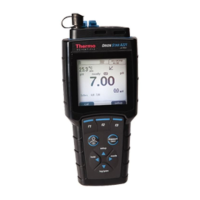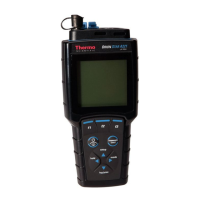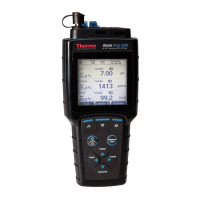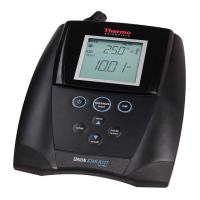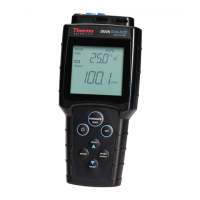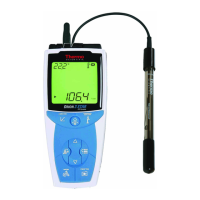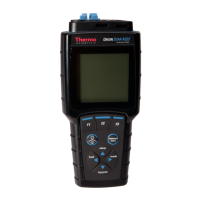
Do you have a question about the Thermo Scientific Orion Star A212 Benchtop and is the answer not in the manual?
| mV Resolution | 0.1 mV |
|---|---|
| Temperature Resolution | 0.1 °C |
| Temperature Accuracy | ±0.1 °C |
| Calibration Points | Up to 5 points |
| Display Type | LCD |
| Data Logging | Yes |
| Outputs | USB, RS232 |
| pH Accuracy | ±0.01 |
| mV Range | ±2000 mV |
| mV Accuracy | ±0.2 mV |
| Temperature Range | -5.0 to 105.0°C |
| Power Supply | 100-240 VAC |
| pH Range | -2.00 to 19.99 pH |
| pH Resolution | 0.01 pH |
| Power | Universal power adapter |
Details on connecting power adapters and batteries for meter operation.
Information on connecting various electrodes and ports to the meter.
Step-by-step guide for attaching the electrode arm to the benchtop meter.
Explanation of various icons and indicators on the meter display.
Description and function of the meter's keypad buttons.
Guidelines for routine cleaning and maintenance of the meter.
Instructions on how to navigate and use the meter's setup menu system.
Overview of the different sections within the meter's setup menu.
Details on configuring parameters for the conductivity channel.
Configuration options for general meter operation, including printing and data logging.
Accessing stored logs and performing meter diagnostics.
Steps for performing automatic or direct conductivity calibration using standards.
How to edit or delete previously saved calibration points.
Procedure for manually calibrating conductivity using cell constant input.
Guide to calibrating the meter's temperature readings using an ATC probe.
Instructions for performing conductivity, TDS, Salinity, or Res measurements.
Procedure for saving current meter configurations as a new method.
Steps to load previously saved meter methods for quick setup.
Managing existing meter methods by editing, copying, or deleting them.
Configuring settings for data logging, computer, and printer export.
Choosing how the meter reads and stores data.
Setting up data export to computers or printers via USB or RS232.
Enabling and configuring the meter's internal data logging feature.
Accessing and viewing stored calibration and measurement data.
Transferring logged data to a computer or printer.
Procedure for deleting all data from the meter's data log.
Guidelines for connecting and communicating with printers and computers.
Troubleshooting common meter errors and suggested corrective actions.
Performing the meter's self-test and checkout procedures.
Procedure to verify conductivity meter functionality using a resistor kit.
Performing a test to check the stability of connected electrodes.
Procedures for factory and user resets of meter settings.
Accessing meter details, warranty, and technical support contact information.
FCC and Canadian compliance statements for radio frequency emissions.
Information regarding compliance with the Waste Electrical & Electronic Equipment directive.
Manufacturer's declaration of product conformity to specified standards.
Environmental and operating conditions for the meter and its power adapter.
Detailed specifications for conductivity, resistivity, salinity, and TDS measurements.
Specifications for temperature measurement, data logging, inputs, output, and power.
Explanation of how temperature compensation and reference temperatures affect conductivity readings.
How conductivity measurements relate to TDS and the use of TDS factors.
Information on the meter's ability to automatically recognize conductivity standards.

